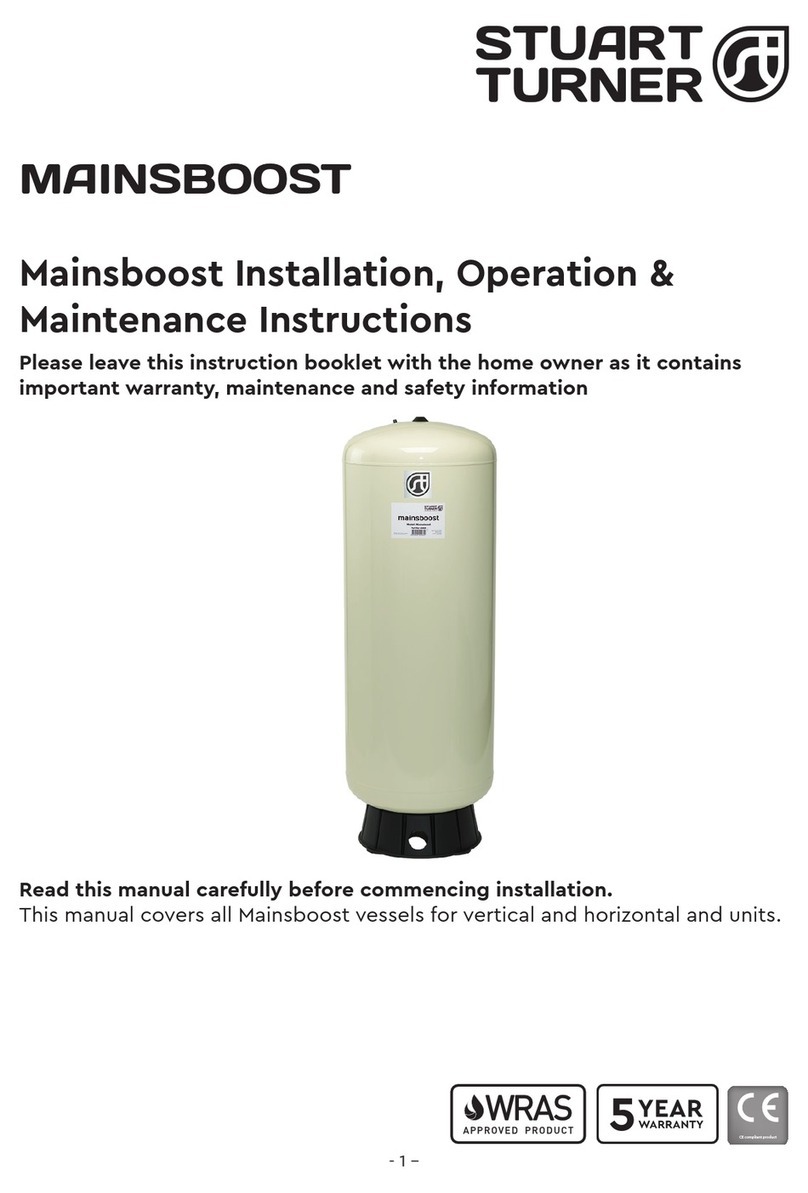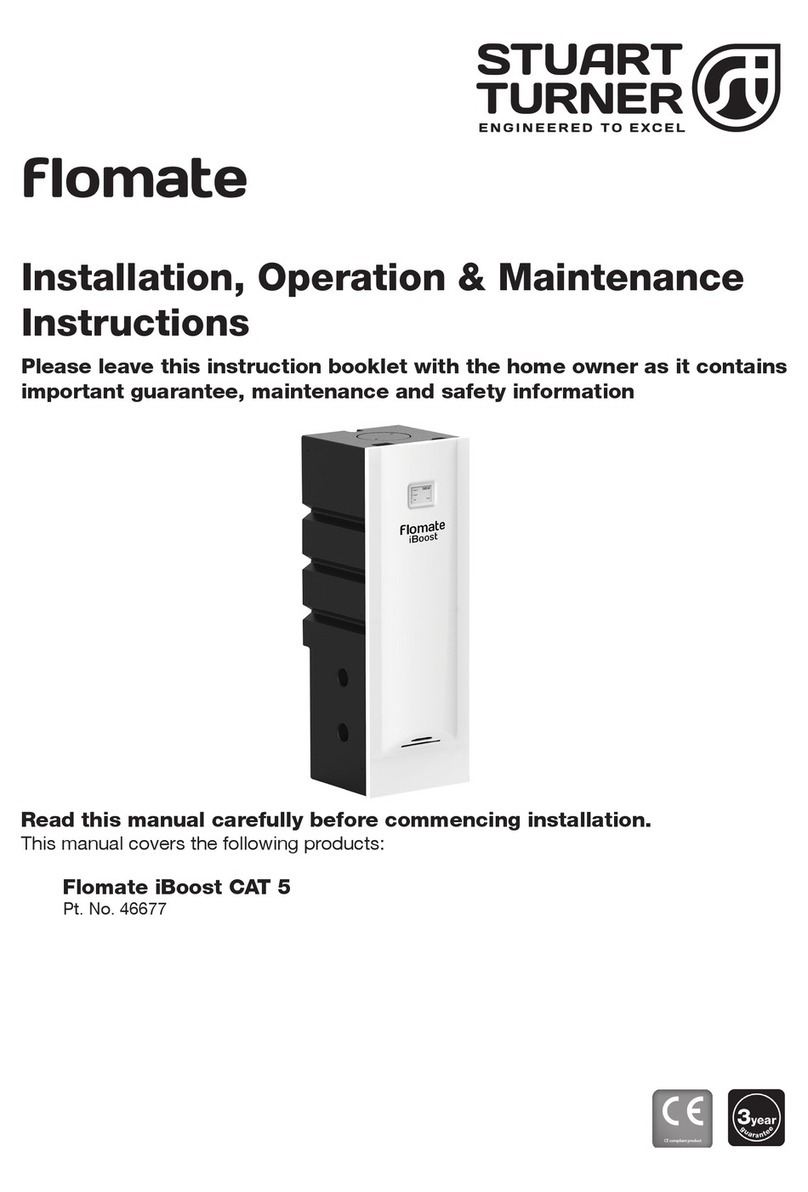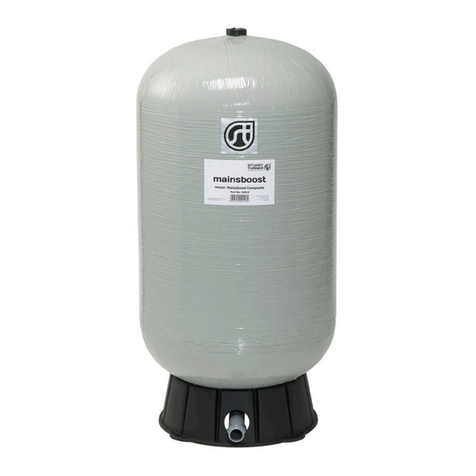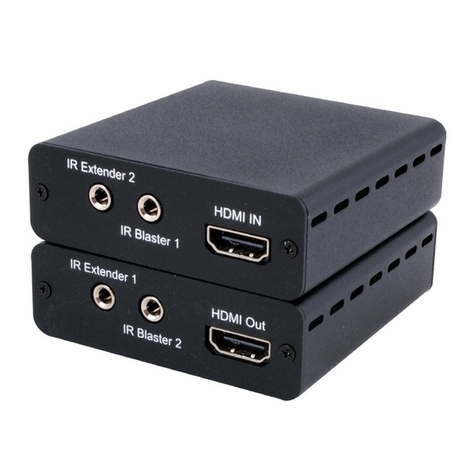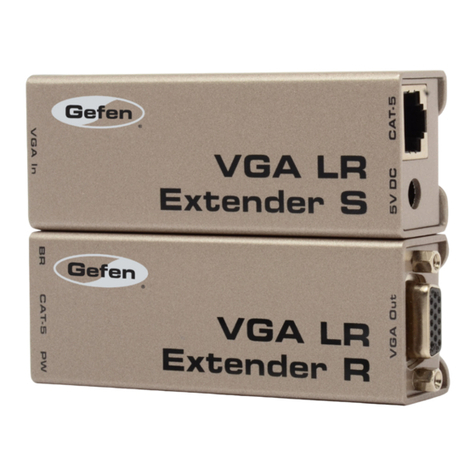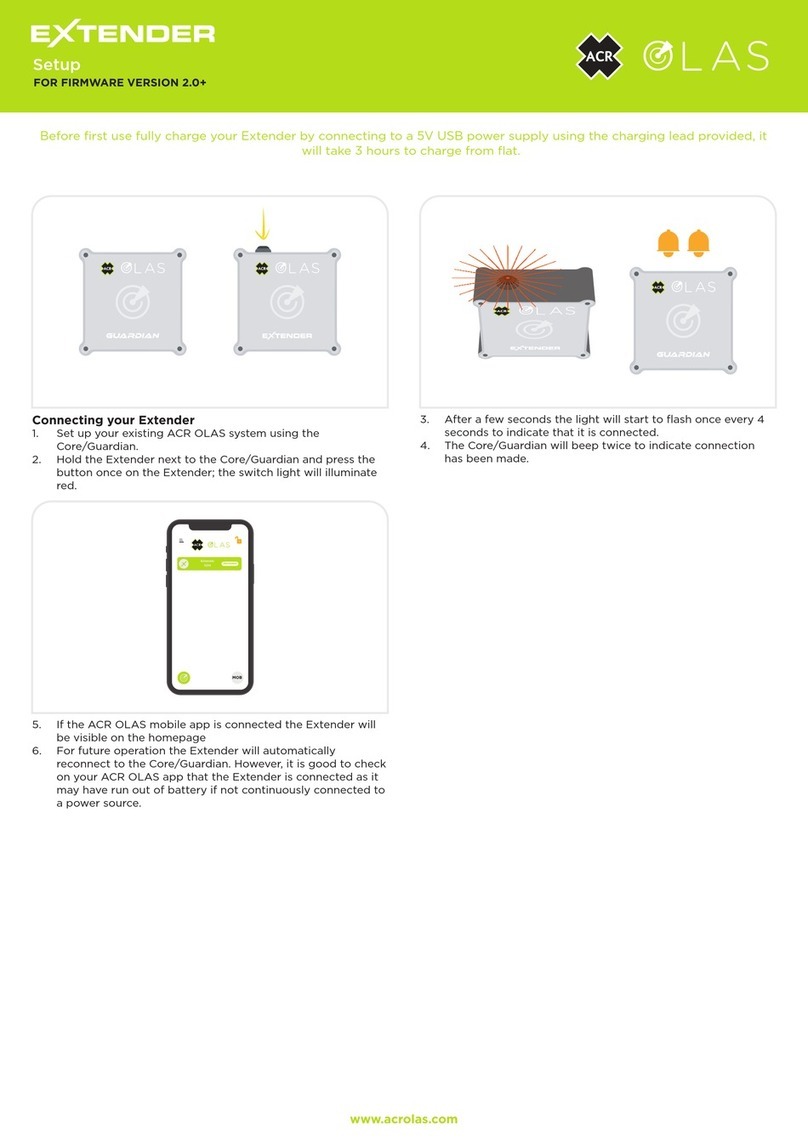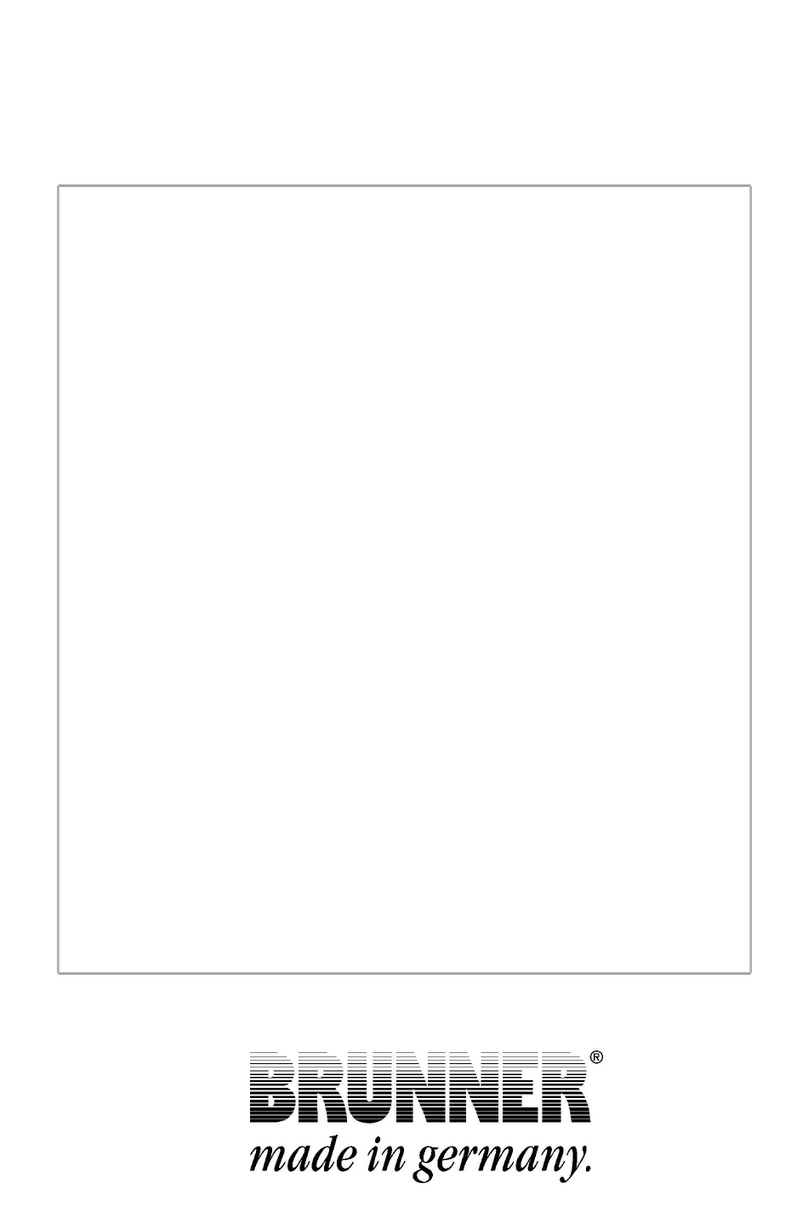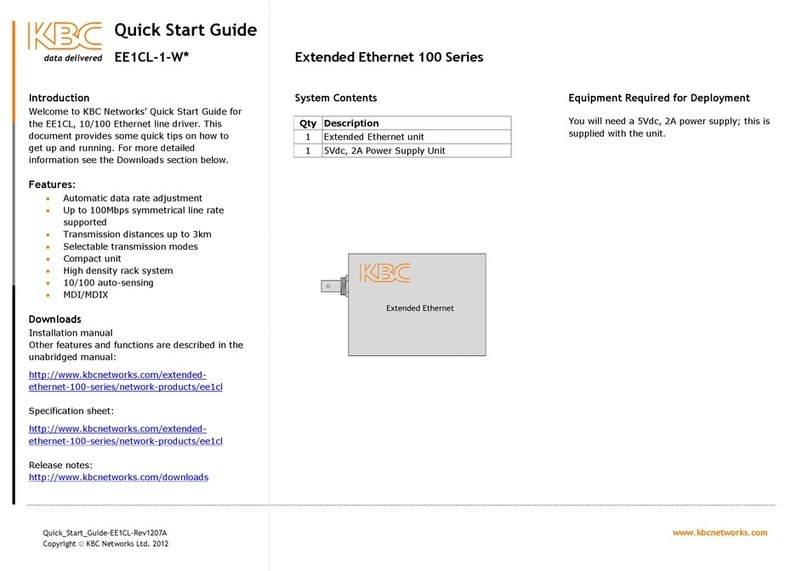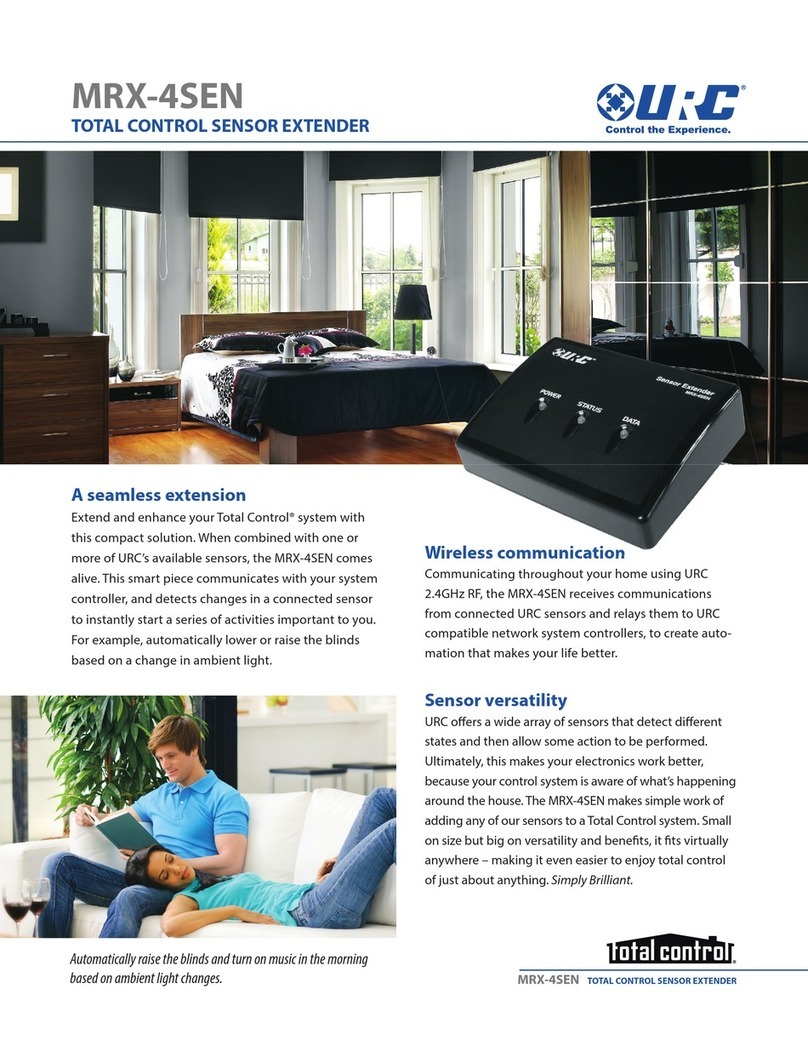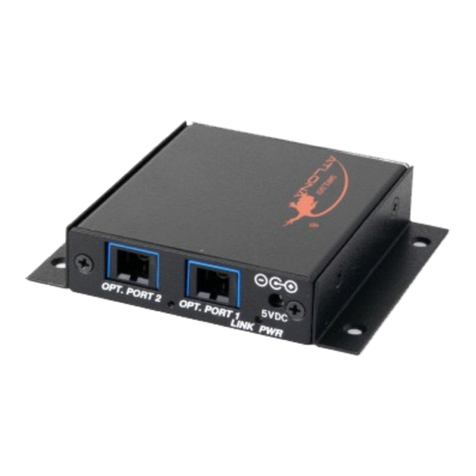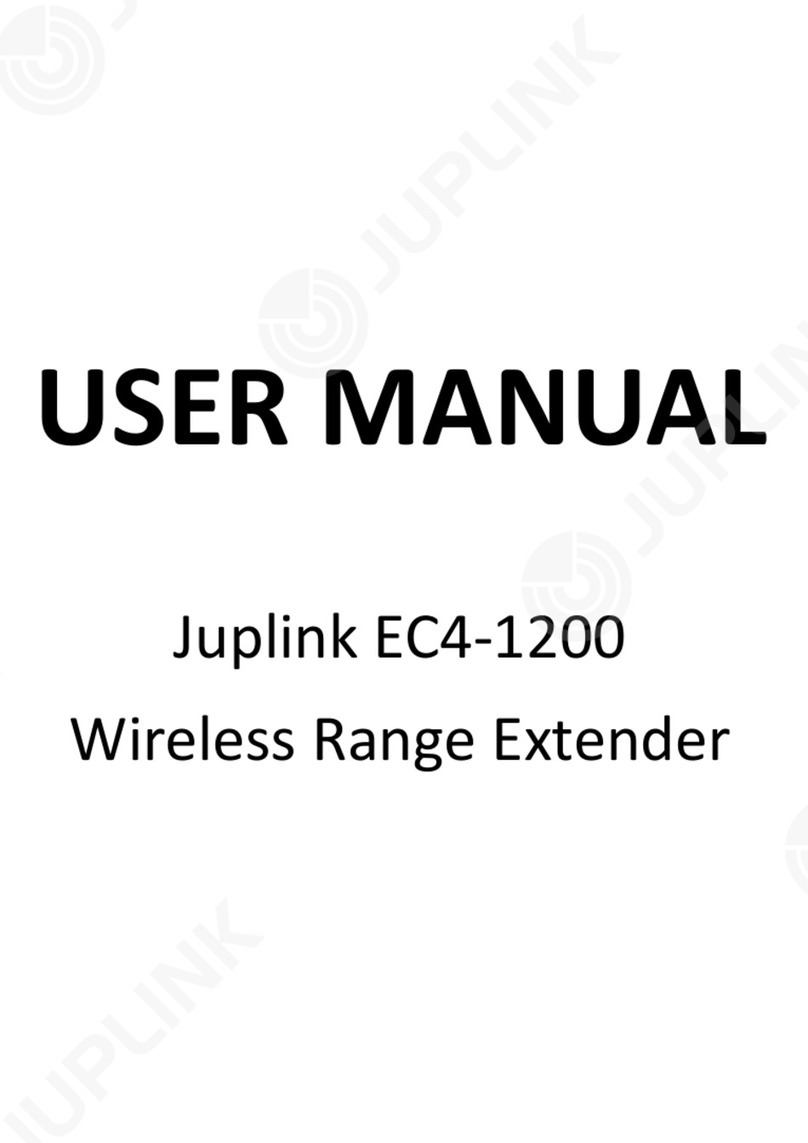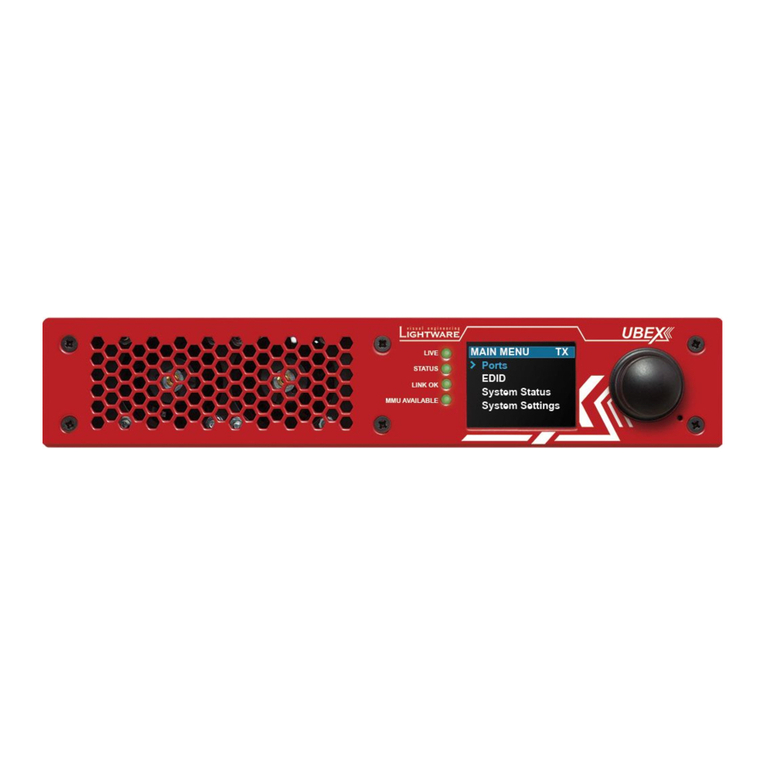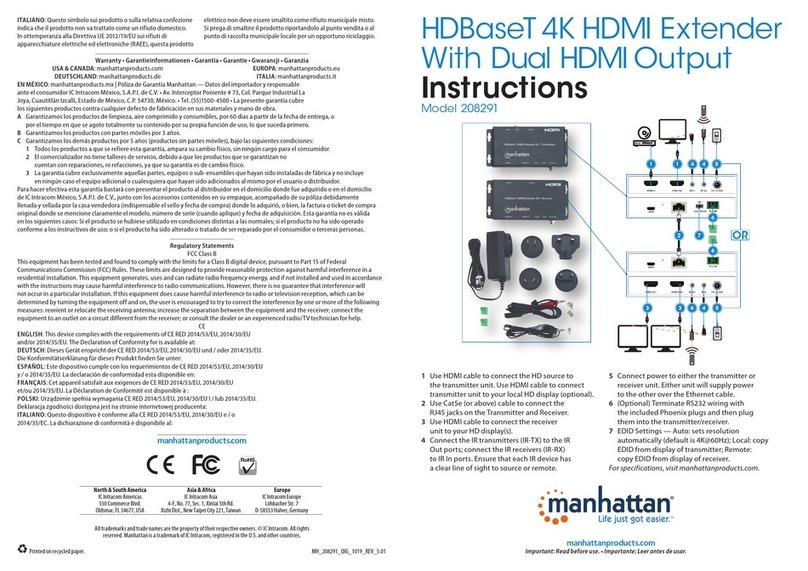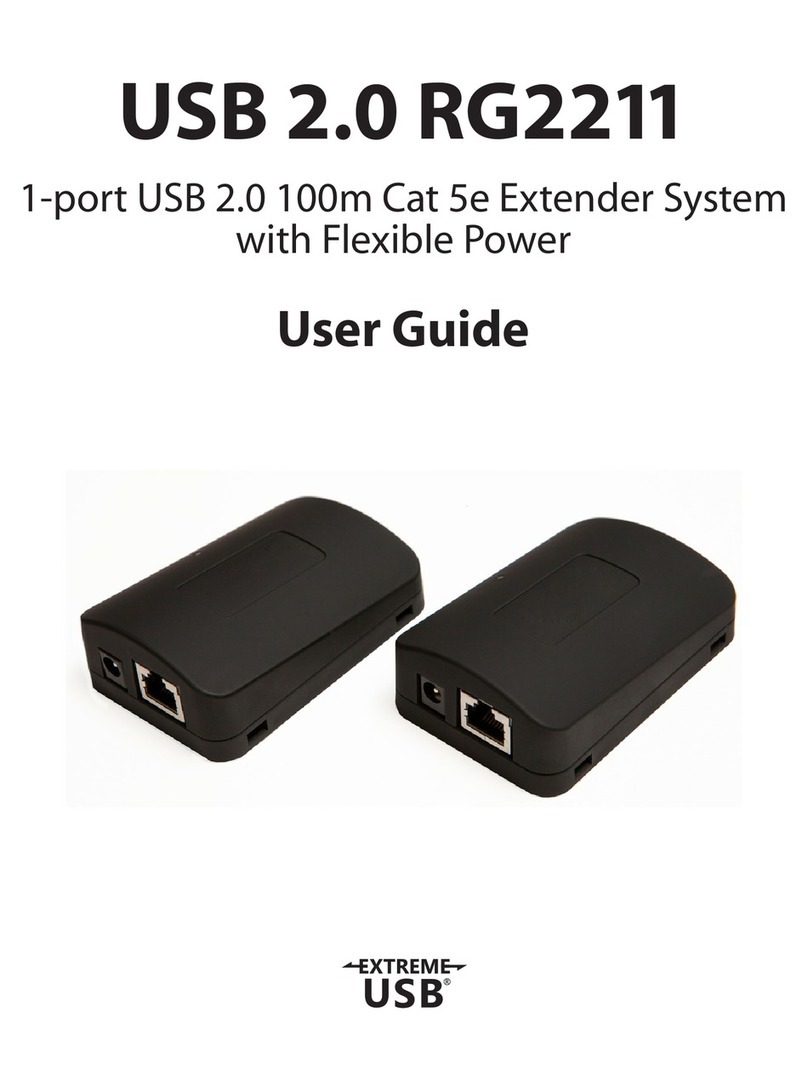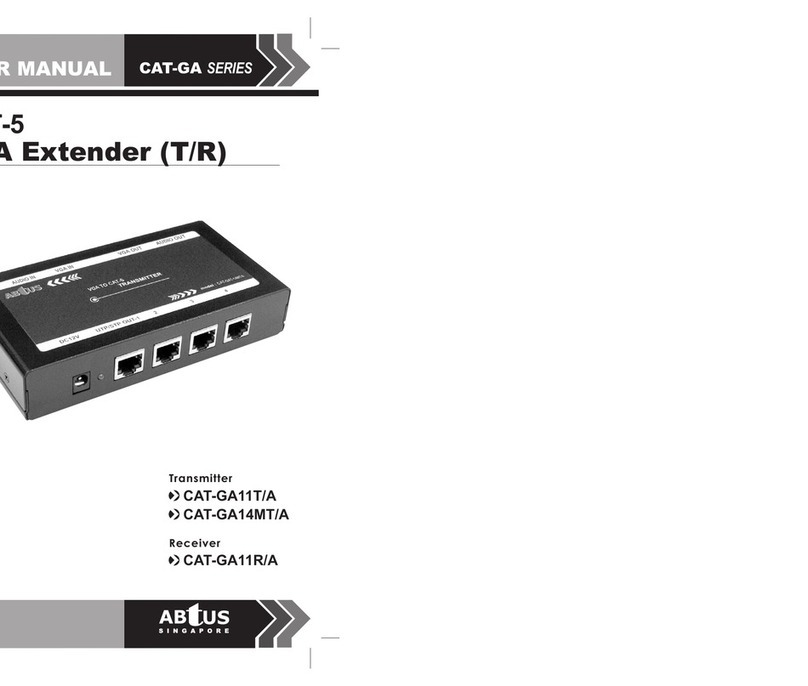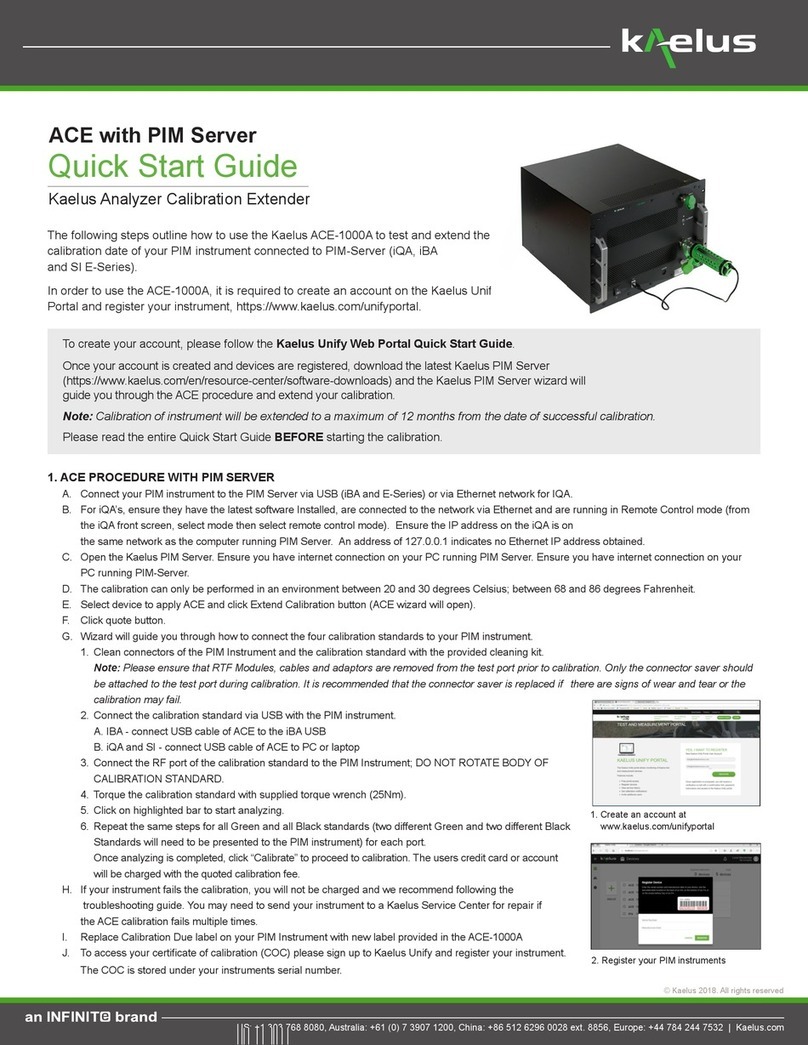Stuart Turner MAINBOOST iTank MBI Series Guide

Installation, Operation & Maintenance
Instructions
Please leave this instruction booklet with the home owner as it contains
important guarantee, maintenance and safety information
Read this manual carefully before commencing installation.
This manual covers the following products:
MBI 320C
Pt. No. 47124
MBI 490A
Pt. No. 47126
Please note images are representative only and
may not portray your model
1
WARRANTY
CE compliant product
MBI 330T
Pt. No. 47125
MBI 500S
Pt. No. 47127
iTank
MAINSBOOST

- 2 –
Cont ...
PRODUCT DESCRIPTION
The iTank range is a water pressure and flow booster set with integral water storage
tank and electric motor driven centrifugal pump complete with an automatic control
system, consisting of flow switch, pressure switch, pressure vessel and electronic
control. The design of the tank incorporates an AC air gap for fluid isolation (BS EN
1717).
APPLICATION
The Mainsboost iTank range is designed to meet the demand of pressurised systems
in domestic applications where the existing mains water supply is insufficient. Inlet
pressures to the tank and ambient temperatures must not exceed the values given in
the technical specifications.
STORAGE
If this product is not to be installed immediately on receipt, ensure that it is stored in a
dry, frost and vibration free location in its original packaging.
CONTENTS Page
Checklist ...........................................................5
Important Facts – read before commencing installation ......................6
Location ............................................................7
Key Features ........................................................9
Assembly, Installation & Connections .....................................10
Electrical Installation ..................................................15
Commissioning ......................................................18
Maintenance .........................................................20
Technical Specification ................................................22
Trouble Shooting .....................................................23
Mainsboost iTank Accessories ...........................................24
Guarantee ..........................................................25

- 3 –
WARNINGS:
zThis pump set must not be used for any other
application without the written consent of Stuart
Turner Limited.
zThis appliance can be used by children aged from
8 years and above and persons with reduced physical,
sensory or mental capabilities or lack of experience
and knowledge if they have been given supervision or
instruction concerning use of the appliance in a safe
way and understand the hazards involved.
zChildren shall not play with the appliance.
zThis product should not be used for the supply of
water to more than one dwelling (house, apartment,
flat).
zCleaning and user maintenance shall not be made by
children without supervision.
zMaximum head (closed valve) 35 metres.
zEnsure the pump or controller cannot be subjected to
freezing conditions as damage will result.
zNever run pump whilst sucking air/liquid as the motor
will overheat. To prevent this from happening always
install pump in the vertical position and ensure fully
submerged.
zThe motor casing can become very hot under normal
operating conditions. Care must be taken to ensure it
cannot be touched during operation.
zThe electrical installation must be carried out in
accordance with the current national electrical
regulations.
zThe electrical installation must be installed by a
qualified person.
zIn the interests of electrical safety a 30 mA residual
current device (R.C.D. not supplied) should be
installed in the supply circuit. This may be part of a
consumer unit or a separate unit.

- 4 –
Cont ...
zBefore starting work on the electrical supply ensure
power supply is isolated.
zIsolate all appliances in the water from the electrical
supply before putting your hands in the water.
zDO NOT allow the supply cord to contact hot
surfaces, including the motor shell, pump body or
pipework. The cord should be safely routed and
secured by cable clips.
zThis appliance must be earthed via the supply cord,
which must be correctly connected to the earth
point located in the terminal box.
zThe supply cord and internal wiring within the
terminal box are routed and secured to ensure
compliance with the electrical standard
EN 60335–1. It is essential that prior to any
disturbance of this internal wiring, all cable routing
and securing details are carefully noted to ensure
re-assembly to the same factory pattern is always
maintained.
zDo not run the pump dry.
zIn the unlikely event of mechanical seal failure
pollution of the liquid could occur due to the leakage
of lubricants.
zIf the supply cord is damaged, it must be replaced by
Stuart Turner Ltd or an official Service Agent to avoid
hazard.
zIn order to avoid toppling over the appliance must
be placed on a smooth, level surface to fully support
the base of the tank. It must not be positioned solely
on beams/joists.
zInspect inside of tank for any debris and clean before
installing to avoid pumping foreign objects through
the water supply.
Please read installation details carefully as they are intended to ensure this product
provides long, trouble free service. Failure to install the unit in accordance with the
installation instructions will lead to invalidation of the warranty.

- 5 –
Cont ...
CHECKLIST
Your product may vary slightly from the picture above.
Package 2
Fig. 2
IMPORTANT: With the appliance removed from its packaging check for any damage
prior to installation. If any damage is found contact Stuart Turner Ltd within 24 hours
of receipt.
Item Description Qty Item Description Qty
Package 1 1 Tank 1
Package 2
cont.
7 6 mm Mounting screws 2
2 Transfer pipe assembly 1 8 Vessel mounting bracket 1
Package 2
1Pump, lid & controller
assembly 1 9 Vessel mounting strap 1
2 G 1 Union 1 10 G ¾ Sealing washers 2
3Inlet adaptor
(G ½ F x 15 mm ROI) 1 11 G 1 Sealing washers 2
4Tee assembly
(G 1 F x G 1 M x G ¾ M) 1 12 G ¾ Transfer hose 1
5Pressure vessel 1 13 1¼ “ Overflow 1
6 G 1 Outlet hose 1 14 G1 Plug 1
Package 1
Fig. 1
6
1
23
2
4
8
13
7
9
1
5
12
10
11
Note: This image is
for reference only. 14

- 6 –
Cont ...
1 IMPORTANT FACTS: READ BEFORE COMMENCING PUMP INSTALLATION
A Water storage capacity
1.11 The iTank usable water volume can be found in the technical specification
table (Section 8); the length of time the iTank delivers water will be dependent
on the usage and refill rates.
1.12 Ensure the iTank is full of water before starting, to avoid causing damage to
the pump shaft seal. See Section 6 – Commissioning.
B Water temperature
This unit is designed to pump cold water only which should not exceed the
following values:
1.13 The maximum allowable water temperature is 23 oC (see Section 7.13).
1.14 The minimum allowable water temperature is 4 oC.
C Pipework – General
1.15 Do not drill holes or put fastenings into the iTank tank, this will cause leakage.
1.16 System leaks: Ensure the system to be boosted is able to hold pressure and
is leak free before installing iTank. Failure to do so will cause abnormal
operation and damage to the unit.
1.17 Secure pipework: Ensure pipework to and from pump is independently
supported & clipped to prevent forces being transferred to inlet and outlet
branches of the iTank. Do not secure pipework to the iTank, this will cause
damage and possible leakage.
1.18 Flux: Solder joints must be completed and flux residues removed prior to
iTank installation (flux damage will void any warranty).
1.19 Pipework design: Care should be taken in the design of pipework runs to
minimize the risk of air locks e.g. use drawn bends rather than 90obends.
1.20 DO NOT introduce solder flux to flexible hose, tank, pump or any parts
manufactured from plastic.
1.21 DO NOT allow contact with oil or cellulose based paints, paint thinners
or strippers, acid based descalents or aggressive cleaning agents.
1.22 DO NOT bend the flexible hose beyond 30o. It must be installed as
straight as possible.
1.23 DO NOT feed other header or gravity tanks with iTank. It is
acceptable to feed toilet cisterns provided the toilet fill valve operates
correctly and is leak free.
1.24 All pipework must be suitably insulated as required.
D Plumbing Installation Regulations
1.25 The plumbing installation must comply with the current water and building
regulations.
1.26 The plumbing installation must be installed by a qualified person.
E Pressure vessel
1.27 The iTank pressure vessel is charged at the factory see Section 7 –
Maintenance for details.

- 7 –
Cont ...
2 LOCATION GENERAL
2.11 Access: For emergencies and maintenance the pump must be
easily accessible.
2.12 Protection: The iTank must be located in a dry, frost free area.
2.13 Heat sources: Separate the iTank from other appliances that
generate heat.
2.15 Water retention: Site the iTank in a location where in the unlikely
event of a water leak, any spillage is contained or routed to avoid
electrics or areas sensitive to water damage. Drip trays are
available for each model to protect from leaks and condensation. If
the unit is intended for use in an attic space or above any critical
area then a drip tray should be fitted (optional accessory avaiable).
2.16 Supply inlet pressure: The water supply inlet pressure must be at least 0.2 bar
and no greater than 10 bar; lower supply inlet pressures will reduce the tank
fill rate and reduce the time the iTank will run at higher flow rates before
running out of stored water.
2.17 Ambient temperature: The iTank must be sited in a location where the
ambient temperature does not exceed 30 oC or below 4 oC (see
Section 7.13 – Water Quality).
2.18 Pipework: For optimum performance outlet pipework must be 21 mm/¾ “
pipe. Pipework should only reduce to 15 mm/½ “ when entering terminal
fittings.
2.19 Static outlet pressure: The static outlet head must also be within the
maximum requirement of 12 metres (vertically above the appliance).
2.20 Noise: A flexible hose is supplied as standard which will minimise the
transmission of noise and vibration from the iTank pump to the pipework
connected to the appliance outlet. However, care must be taken when
mounting the iTank that any noise is not amplified through loose panels or
pipework.
2.21 Direction of flow: Ensure the water flow is in the direction of the arrow
marked on the control module.
2.22 Flexible hose: Only use the Stuart Turner hose supplied with the pump.
2.23 Isolating valves: Separate system isolating valves (non restrictive) must be
fitted to allow easy pump service. Isolating valves must be mounted where
specified to allow the system isolation and removal of the iTank if needed.
See Section 4 for installation details.

- 8 –
Cont ...
2.24 Preferred iTank location: The iTank must be located on a smooth level
floor of sufficient strength to support the filled weight of the iTank, close to
the water source and a suitable overflow position (see Section 8 – Technical
Specification for filled weight). The iTank must not be installed solely on
beams/joists, doing so will result in permanent damage to tank. The tank
must be supported continuously along its base with no sharp or uneven parts
that could pierce the tank.
It must also be considered that the noise and vibration from the iTank may
be transmitted through the structure the iTank is sited on.
Ensure there is sufficient room above the iTank to allow the removal and
servicing of the pump module and internal float valve and also enough room
around the iTank to access all inlets/outlets.
The unit should be located indoors and be protected from frost damage
(insulation jacket option available).

- 9 –
3 KEY FEATURES
Overflow
Pressure vessel
Drain port
Tank access cover
Mains water connection
Integrated beather
Label part no.
Pump
Secondary gravity feed
port (plugged)
Tank
Fig. 3
Label, serial no & user inteface
Outlet hose
Control module

- 10 –
Cont ...
4 ASSEMBLY, INSTALLATION & CONNECTIONS
4.11 Stage 1 – Vessel Assembly:
Step 1
Secure mounting bracket to tank using factory drilled holes with supplied
6 mm screws. Do not drill additional holes into the tank (Fig. 4).
Step 2
Feed the strap through the slots in the bracket and place the pressure
vessel on the bracket (Fig. 5).
Step 3
Wrap the strap around the vessel and feed through the slot in the wratchet
pin. If the slot is not positioned correctly to feed the strap through, operate
the wratchet to rotate the pin (Figs 6 & 7).
Fig. 4 Fig. 5
Mounting bracket
Mounting screws
Factory drilled holes
Strap
Strap
holes
Fig. 6 Fig. 7
Slot in ratchet pin

- 11 –
Cont ...
Step 4
Pull the strap through and apply tension then operate the wratchet to
maintain the applied tension to secure pressure vessel, do not over tighten.
Feed excess strap length under the vessel through the bracket to tuck it away
(Figs 8 & 9).
Fig. 8
Fig. 9

- 12 –
Cont ...
4.12 Stage 2 – Pump Assembly:
Step 1
Assemble pump to underside of lid – ensure G 1 washer is properly placed in
groove on underside of the lid (Fig. 10).
Step 2
Assemble control module to top of lid using pre installed union (Fig. 11).
Step 3
Assemble tee assembly to the control module using suitable thread sealant or
PTFE tape and the outlet hose to the tee assembly using the supplied G 1
washer (Fig. 11).
Step 4
Ensure float switch is located correctly, pointing upwards and secured by a
cable tie as per Fig. 12. Place the assembly (Fig. 12) into the tank, screwing
down the lid, and tighten the cable gland to secure the cable once the
control module position relative the tank lid is set. The control module
position may be adjusted using the union to ensure it is orientated towards
the user. Ensure that the control module G 1 union is secured tightly to
maintain a good seal (Fig 14).
Fig. 12
Fig. 10
Tank lid
G 1 washer
Transfer pipe
assembly
G 1 union
Pump
Fig. 11
Outlet hose
G 1 washer
Tee assembly
Control module
Cable gland
Controller and lid
removed for clarity,
ensure the float is
pointing upwards
- DO NOT REMOVE
THE ZIP TIE!

- 13 –
Cont ...
4.13 Stage 3 – Final Assembly:
Step 1
Install the provided 1 1/4” overflow using the included overflow washer and
nut (Fig. 13a) and the 1/2” compression adaptor to the inlet valve which
should be sealed using suitable thread sealant or PTFE tape (Fig. 13b).
Step 2
Connect pressure vessel to control module using included G ¾ hose and
washers (Fig. 14).
Fig. 14
G ¾ washer
G ¾ hose
G ¾ washer
Pressure vessel
Fig. 13a
Overflow
nut
Overflow
washer
Overflow Inlet valve
compression adaptor
Fig. 13b

- 14 –
Cont ...
4.14 Mains water connection to iTank: The iTank is to be permanently connected
to the mains water supply using rigid pipe or suitably sized and rated flexible
hose to comply with current building and plumbing regulations.
The water tank fill valve has a ½ “/15 mm compression fitting. When
tightening ensure the fill valve within the tank is not rotated. If the valve is
rotated it may not function correctly, with the subsequent risk of flooding.
4.15 Connection to overflow/warning pipe: The overflow fitting is designed to use
G 1 ¼ (35 mm OD) plastic waste pipe. The overflow must be free to vent to
atmosphere either via a tundish (Fig. 15) or a dedicated external pipe.
4.16 It is recommended that at least one drinking water tap is connected into the
un-pumped mains water supply (typically a kitchen sink), so the water supply
is maintained in the event of a failure of the pumped supply.
4.17 The iTank includes a G 1 F outlet as a gravity feed for uses where high
pressure/high flow is not required such as filling of a toilet cistern.
Use an appropriate fitting and seal using suitable thread sealant or PTFE tape
to connect to this outlet.
Use the included G1 plug and suitable thread sealant to
blank off this port if it will not be used for your installation.
Fig. 15
Pipe support clips
Pipe
support
clips
Isolating valve
Isolating
valve
Isolating valve
Pumped water
supply
Non-pumped
water supply
(drinking water)
Mains water
supply
Overflow
pipe
Drain
supply
Secondary
gravity
feed
Tundish

- 15 –
Cont ...
5 ELECTRICAL INSTALLATION EARTHING
5.11 Regulations: The electrical installation must be carried out in
accordance with the current national electrical regulations and
installed by a qualified person.
5.12 In the interests of electrical safety a 30 mA residual current device
(R.C.D. not supplied) should be installed in the supply circuit. This
may be part of a consumer unit or a separate unit.
5.13 Before starting work on the electrical supply ensure power supply is
isolated.
5.14 DO NOT allow the supply cord to contact hot surfaces, including the
motor shell, pump body or pipework. The cord should be safely
routed and secured by cable clips.
5.15 Adjacent pipes: Adjacent suction and delivery pipes should be fitted
with earthing clamps in accordance with current regulations (Fig.16).
5.16 Earthing: This appliance must be earthed via the supply cord, which must be
correctly connected to the earth point located in the terminal box.
5.17 Pipework: Copper or metallic pipework must have supplementary earth
bonding where the continuity has been broken by flexible hoses or plastic
components.
5.18 Additional earthing: Certain installations may require additional earthing
arrangements such as equipotential bonding. Reference should be made to
the relevant regulations concerning this subject to ensure compliance.
5.19 Connections: The pump must be permanently connected to the fixed wiring
of the mains supply using the factory fitted supply cord, via a double pole
switched (with a minimum of 3 mm contact separation) fused spur off
the ring main and NOT connected to the boiler or the immersion heater
circuits.
Diagram
of earth
continuity
connections
Fig. 16

- 16 –
Cont ...
5.20 Wiring of connection unit:
WARNING: This appliance must be earthed.
The wires in the mains lead (supply cord) are coloured in accordance with
the following code:
Green and Yellow: Earth
Blue: Neutral
Brown: Live
As the colours of the wires in the mains lead of this appliance may not
correspond with the coloured markings identifying the terminals in your
connection unit proceed as follows:
zThe wire which is coloured green and yellow must be connected to the
terminal in the connection unit which is marked with the letter E or by the
earth symbol: or coloured green or green and yellow.
zThe wire which is coloured blue must be connected to the terminal which
is marked with the letter N or coloured black.
zThe wire which is coloured brown must be connected to the terminal
which is marked with the letter L or coloured red.
zIf the included 13 metre supply cord is too long then it may be cut to the
required length, stripped and wired in accordance with the current
national electrical regulations and installed by a qualified person.
5.21 Wiring Diagram:
5.22 Fuses: The following fuse size should be used:
Model Fuse Size (AMPS)
All models 10
MOTOR
50 Hz
1 Phase
230 V
SUPPLY
L
N
E
FUSE
V
U
N
L1
MODULE
CONTROL
PRESSURE
E
GREEN/YELLOW
BLUE
BROWN
3
4
5
6
2
1
Fig. 17

- 17 –
Cont ...
5.23 Supply Cord Replacement:
The supply cord and internal wiring within the terminal
box are routed and secured to ensure compliance with
the electrical standard EN 60335–1. It is essential that
prior to any disturbance of this internal wiring, all cable
routing and securing details are carefully noted to
ensure re-assembly to the same factory pattern is always
maintained.
If the supply cord is to be changed or is damaged, it must be replaced with
a special cord assembly available from Stuart Turner or one of their approved
repairers.
On disassembly note the cord retention and routing system. Re-assemble to
the same pattern.
For information on cable connection consult the wiring diagram and cable
gland fitting instructions.
5.24 Cable Gland Fitting Instructions:
To enable correct assembly of the cable glands, gland seals (1) must be
placed over the cable before tightening the gland nuts (2) to prevent
water/dust ingression. Ensure cable clamp (3) is installed and clamped on the
outer cable insulation (not on the 3 wire cores) to ensure cable retention.
5.25 Supply Cord Extension:
The pumps are fitted with a supply cord to the following specification:
All models = HO7RN-F3 G 1.0 mm – 10 Amp rated cable.
If the supply cord is to be extended, a cord of the same specification should
be used. Any connections or junction boxes used should be specifically
suited for the application and installed in accordance with the manufacturers
instructions.
V
L1
N
U
V
L1
N
U
Fig. 18
Cable gland nut (2)
Cable gland
nut (2)
Cable gland seal (1)
Cable gland seal (1)
Captive cover
screws
Electrical cover
Cable clamp (3)
Cable clamp
screw (3)

- 18 –
Cont ...
6 COMMISSIONING STARTING
6.11 System Flushing
The pipework system should be flushed out prior to the iTank
being connected to ensure any contaminants/chemical
residues and foreign bodies are removed from elsewhere in the
system.
6.12 Water Supply: Always ensure that water supply is adequate to meet the
demand. Ensure the tank is full of water before starting the pump. Failure to
do this could result in seal damage. The pump should be fully submerged
before starting. Do not run pump dry.
6.13 Unit starting and operation:
Starting
When the unit is connected to the electrical supply, the green led “Power
On” lights up and the yellow led “Pump On” (pump in operation) indicates
that the pump has been started.
Ensure all outlets are closed, turn the power supply ‘on’ – pump will start,
pressurise the system and then stop. Open and close all outlets in turn
associated with the pump (including w/c systems), allowing water to
flow from each outlet until all air is purged. As each outlet is opened and
closed, the pump will start and stop respectively.
If the FAILURE (red) L.E.D. lights up, this indicates that the pump is out of
water or priming is incomplete. In the event of this happening, check
water supply to pump. If all is in order keep the RESTART button depressed
with a tap open and wait until the red failure light goes out. When the button
is released and the tap closed, the control unit will stop the pump at its
maximum pressure. Do not run against a closed valve for periods longer
than 5 minutes.
Operation
Once the commissioning operation is completed, the module will perform
all pump control operations automatically. Note: After closing any outlet
there will be a small delay time before the pump stops operating, which is
normal. Any tap or control valve within the system when opened and
closed will now turn the iTank on/off, there will be a delayed start due to
the water stored in the pressure vessel. Providing this is the case the system
is now operating correctly. Carefully check pump and pipework for
leaks whilst the pump is running and stationary before leaving the installation
unattended.
Pump failure
When particular operational breakdowns occur, such as liquid failure, the
module recognises the breakdown and the red L.E.D. FAILURE light comes on.
The pump stops operating to prevent damage caused by its working in the
absence of liquid. After rectification of the failure, the system is restarted by
depressing the restart button.

- 19 –
Cont ...
6.14 For Further Technical Support: Phone the Stuart Turner TechAssist team
on +44 (0) 800 31 969 80. Our staff are trained to help and advise you over
the phone.
Fig. 19
‘Power on’ L.E.D. (Green)
‘Pump on’ L.E.D. (Yellow)
‘Failure’ L.E.D. (Red)
Restart button (Red)

- 20 –
Cont ...
7 MAINTENANCE
7.11 Pressure vessel: The pressure vessel should be checked once every
12 months to have its pre-charge checked or replenished, this should be
carried out as follows:-
a) Isolate pump electrically.
b) Isolate the water supply by closing the appropriate isolating valves.
c) Release system water pressure by opening an outlet on the system.
d) Check pre-charge at Schrader valve (Fig. 20) using a tyre pressure gauge.
e) Replenish pre-charge by injecting air into the vessel via the Schrader valve
using a car or bicycle pump (Fig. 20).
f) Close all system outlets, open inlet and outlet isolating valves.
g) After maintenance is completed refer to Section 6 – Commissioning for
instructions on re-starting pump.
7.12 Water scale: In areas of hard water, scale can cause the mechanical pump seal
to stick if left without use for long periods. The pump must be run for at least
5 minutes every four weeks to “exercise” all working parts. See Section 8 –
Technical Specification for note on water temperature.
7.13 Water quality: As with any stored volume of water; in order to ensure that the
water remains fit for use the water temperature needs to remain below 20 oC.
The quality of stored water will deteriorate with time and temperature.
Bacterial growth is dependent on the water temperature, growth rates
will be higher when the conditions are warm. To help control stored water
temperatures, insulation jackets designed specifically for the iTank can be
purchased from Stuart Turner.
If the water remains unused for long periods of time, the tank should be
drained and flushed through. The tank should be cleaned on an annual
basis to protect against bacterial growth. If the iTank is installed in a
rental property, it must be maintained in line with current Health & Safety
regulations.
Fig. 20
Schrader valve
Pressure vessel
Model Pre-charge
bar (psi)
All models 1.2 (17.4)
This manual suits for next models
8
Table of contents
Other Stuart Turner Extender manuals
